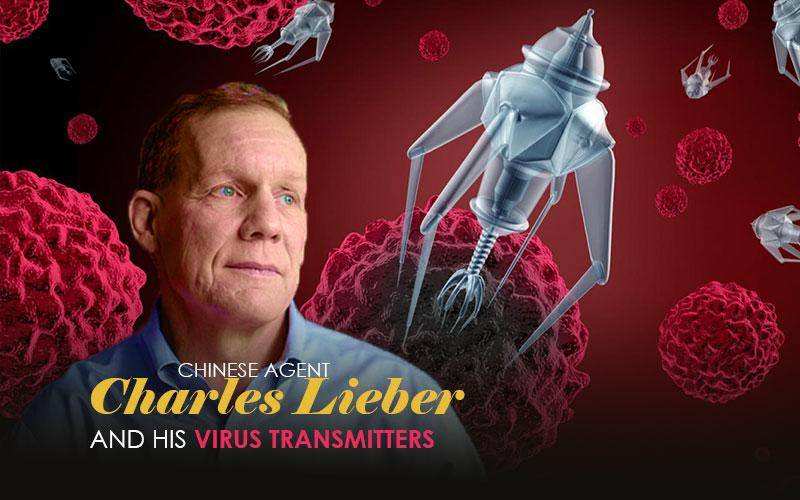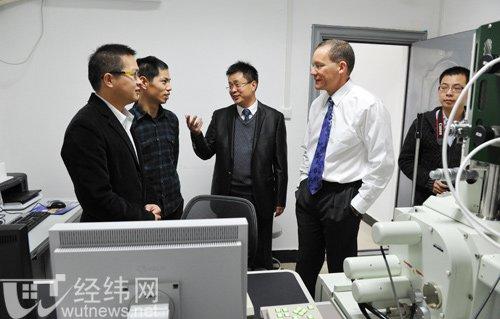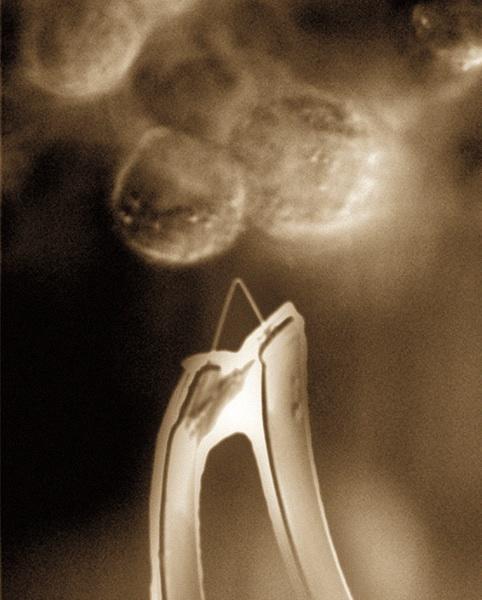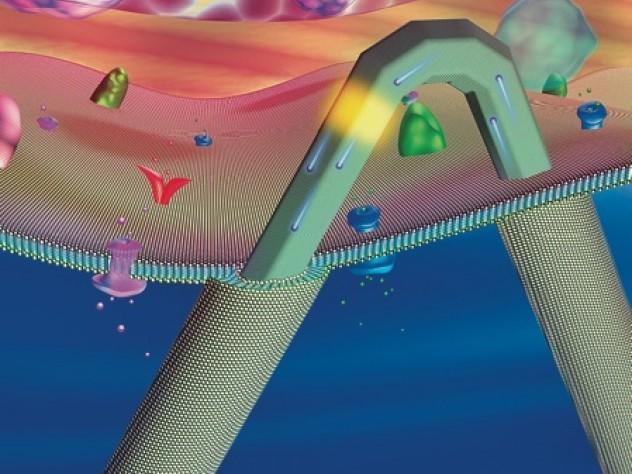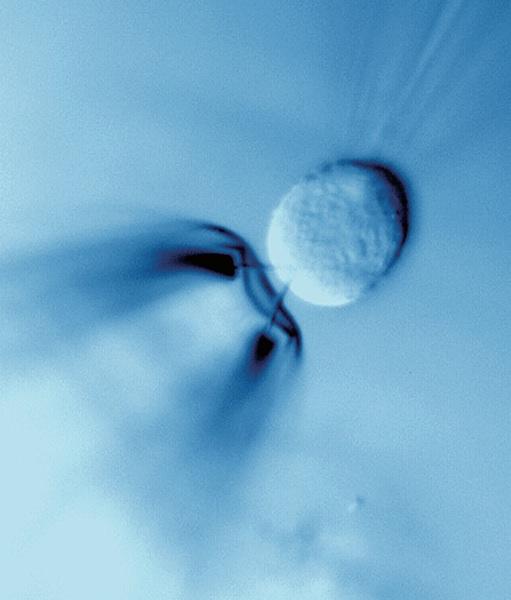Exposing Harvard’s Chinese Agent Charles Lieber’s “Virus Transmitters”
Dr. Charles Lieber is a nano-scientist at Harvard University. He was recently charged by the American authorities for secretly being a Chinese agent.
However, there is a mystery surrounding the nature of his work. It is said he was recruited for advanced research into nanowire-batteries. But investigation by GreatGameIndia has shown that Lieber was infact working on virus transmitters that could penetrate cell membranes without affecting the intercellular functions and even measure activities inside heart cells and muscle fibers.
Chinese Agent Charles Lieber
Dr. Charles Leiber is a nano-scientist at Harvard University who also serves as a chair for Harvard’s Department of Chemistry and Chemical Biology. He was arrested by the U.S. Department of Defense in January for lying about his association with China’s Thousand Talent Program. It is basically a recruitment plan which seeks to lure Chinese overseas talent and foreign experts to bring their knowledge and experience to China and in return, reward individuals for stealing proprietary information.
Chinese Agent Dr. Charles Lieber
According to the charging documents, Lieber was a contractual participant of the program and was paid $50,000 monthly, along with $158,000 in living expenses and $1.74 million to set up a research lab at Wuhan University. The fact that Lieber kept his association with the Chinese a secret put his integrity in question as well as financial conflicts of interest, including financial support from foreign governments or foreign entities.
Nanowire-Batteries – a Smokescreen?
What’s more concerning is that the affidavit released by the federal prosecutors states that Leiber signed an agreement between Harvard and Wuhan Insitute of Technology. According to the affidavit, the purpose of the agreement was to “carry out advanced research and development of nanowire-based lithium-ion batteries with high performance for electric vehicles.”
Dr. Charles Lieber at Wuhan Institute of Technology in 2011
However, things don’t add up since the focus of Leiber’s research has never been about nanowire batteries. One nanoscientist and former student of Lieber’s says: “I have never seen Charlie working on batteries or nanowire batteries.” In fact, in all his research papers and patents, there is no mention of “batteries” or “vehicles”.
Although Lieber was released a day later on a $1 million bond, the question remains what exactly was the nature of Leiber’s research.
Leiber and his ‘Virus Transmitters’
Dr. Leiber joined Harvard in 1991. In his early days at the university, he made great strides in the field by growing nanowires in a flask. Researchers before Leiber were already creating wire-like structures with the help of semiconductors, metals and other materials. However, their approach would be quite expensive and would need clean-room facilities like the ones used by computer chip-makers.
In contrast, Lieber could create nanostructures using nothing but simple and inexpensive chemical techniques. He even went a step further to show how these nanowires could be used as transistors, complex logic circuits, data storage devices, and even sensors.
A V-shaped silicon nanowire is attached to bimetal connectors that lift the entire structure up out of the horizontal plane on which it is made. B.Tian and C.M. Lieber, Harvard University
In 2001, Harvard Magazine published a report that discussed Leiber and his team’s research into what was termed as ‘Liquid Computing’. The report mentioned how Leiber was at the forefront solving silicon-based microelectronics industry’s greatest challenge – making silicon chips smaller and smaller.
Leiber noted that “continued shrinkage ultimately becomes problematic in terms of just how one achieves [it].” Instead, he created tiny logic circuits and memory – the two main components of a computer – using nanowires. And these circuits were really tiny, some of which just a few atoms across!
Ten years later, Leiber created a transistor so small it can be used to penetrate cell membranes and probe their interiors, without affecting the intercellular functions. The bio-compatible transistor – the size of a virus – can not only measure activities inside a neuron but also heart cells and muscle fibers.
Charles Lieber created a transistor so small it can be used to penetrate cell membranes and probe their interiors, without disrupting function. The transistor (yellow) sits near the bend in a hairpin-shaped, lipid-coated silicon nanowire. Its scale is similar to that of intra-cellular structures such as organelles (pink and blue orbs) and actin filaments (pink strand). B.Tian and C.M. Lieber, Harvard University
In 2017, Leiber and his team successfully created flexible 3D nanowires mesh that can inject into the brain or retina of an animal, attach itself to the neurons and monitor electrical signals between the cells.
Once the nanowire has been lifted up, it can penetrate three-dimensional structures such as cells. B.Tian and C.M. Lieber, Harvard University
It’s no surprise the Chinese officials were quick to get him onboard considering he’s the brightest brain when it comes to nanotechnology. Not only his research would have made China an important player in this futuristic technology but it would also be a be a step forward towards China’s stated goal of Biological Dominance.
Nanotech in the Battlefield
The importance of nanotechnology in advanced warfare can be understood from the fact that the United States’ Department of Defense (DoD) is one of the largest supporters of nanotechnology research. They have funded hundreds of millions of dollars into various research related to nanoelectronics and nanomaterials.
The technology could help create nanosensors and nanocoatings that military could use to protect soldiers against chemical and biological attacks. The fact that nanosensors can detect microscopic quantities of chemicals means it can be used as an effective early warning system against chemical warfare agents such as nerve agents and blood agents.
One can see why Charles Lieber’s secret association with the Chinese institutes and universities and his expertise in nanotechnology could pose a serious threat. Lieber lied about his involvement with the Thousand Talents Plan and affiliation with the Wuhan Institute of Technology and that makes him no less than a Chinese biowarfare agent.
Tyler Durden
Mon, 04/20/2020 – 20:15
